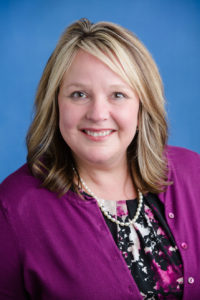If you’re changing jobs, you probably have a lot on your mind. As you wrap up work with your previous employer and prepare for your new role, it can be easy to let important benefits-related decisions fall by the wayside. If that happens, you could miss a limited opportunity to sign up for new benefits or miss out on making wise changes to your plans. To stay on track financially during a career transition, be sure to review the status of your retirement accounts and other valuable employee benefits.
Qualified Retirement Plans
Many employers offer qualified retirement plans, such as 401(k) and 403(b) accounts. (“Qualified” means that these plans qualify for tax advantages per IRS rules.) When transitioning to a new job, you’re entitled to keep the vested balance in your qualified retirement plan, including contributions and earnings. You’re also entitled to keep any employer contributions that have vested according to your employer’s schedule.
What can you do with the money? You have several options:
- Leave the funds in your current employer’s plan if your vested balance exceeds $5,000. If the balance is less than $5,000, the plan could require that you roll over or distribute your assets.
- Roll over the funds to an individual IRA or, if allowed, to your new employer’s plan.
- Withdraw the funds and pay any taxes due along with any applicable penalties. (It’s wise to carefully consider any decision to withdraw and spend your retirement savings.)
Accumulation rights. If you wish to roll over the funds, consider the accumulation rights you may be giving up by switching to a different plan. Accumulation rights offer shareholders the potential for reduced commissions when purchasing additional fund shares. If you have such rights with your current plan, they could become important if you plan to purchase a sizable amount of shares.
Potential penalties and fees. It’s also important to consider the possibility of premature distribution penalties, as well as any fees and expenses a new plan may impose. If you’ve separated from service in the year you turn 55, or at any later age, any assets distributed from your old employer’s plan aren’t subject to the standard 10 percent penalty. Once funds are rolled into an IRA or a new plan, however, the 10 percent penalty may apply to subsequent distributions if you’re younger than 59½ at the time, unless you can claim an exception.
Rolling funds over to an IRA. Factors to consider before taking this action include:
Advantages
- IRAs may provide more investment choices than employer plans.
- IRA assets can be allocated to different IRAs. There is no limit on how many direct transfers you can make from one of your IRAs to another IRA in a year. This means you can easily move money between IRAs if you’re dissatisfied with an account’s performance or administration.
- Although 401(k) distribution options depend on the plan terms, IRAs offer more flexibility.
- IRAs have more premature penalty exceptions than 401(k) plans.
Disadvantages
- When you turn 72, you must start taking required minimum distributions (RMDs) from pretax IRAs, whereas you may be able to defer them in a 401(k) until the year you retire if your employer allows for it. (There are no RMDs from Roth IRAs during the account owner’s lifetime.)
- IRA account expenses, such as trading charges or annual fees, may be higher than qualified retirement plans.
- When you roll funds over from a 401(k) to a Roth IRA, taxes will need to be paid on the pretax contributions; however, any future distributions from the Roth IRA may be tax free if IRS requirements are met.
Rolling funds over to your new employer’s plan. Employer plans offer the following advantages:
- If you intend to work beyond age 72, participation in the employer’s qualified plan means you can typically delay the first RMD until the year you retire if the plan allows. (An exception applies if you own 5 percent or more of the business offering the plan.)
- Employer 401(k) plans may receive greater creditor protection than IRAs. Typically, employer plan funds cannot be used to satisfy most creditors, while the federal protection for IRA funds is more limited.
Stock Options and Nonqualified Deferred Compensation Plans
Prepare a list of any stock options you’ve received from your employer. Often, vested options expire within a specified time frame when you leave a job. Deciding whether to exercise your options depends on your financial situation and whether your options are “in the money” (i.e., the exercise price is lower than the market value).
Nonqualified deferred compensation plans allow executives to defer a portion of their compensation and the associated taxes until the deferred income is paid. With these plans, leaving your employment may trigger the need to take distributions in lump-sum or installment payments. You should be aware that any distributions will affect your taxable income.
Life Insurance and Disability Insurance
Employer-provided life insurance remains active only while you are employed. Ask if you have the option to convert the policy to an individual policy offered by the same insurance provider. If you do switch to an individual policy, however, the premium will likely increase. In some cases, it may be time to evaluate policy options from other companies. If you’re in between jobs, for instance, you may want to consider an individual policy that won’t be affected by employment changes.
Health Insurance
Your health insurance will expire once you leave an employer. COBRA may be a good option if you need interim health insurance coverage. Keep in mind, however, that your premium payments will increase when you opt for COBRA coverage. Shopping for an individual health insurance policy that meets your needs could reduce your premiums.
New Benefits Review
Once you start your new job, take time to understand the new benefit options, including health insurance, disability insurance, and employer savings plans. It’s important to review how the new employer retirement plan options fit into your overall savings plan, including any employer matches. Remember to fill out beneficiary designations for insurance policies and saving plans—and review those designations periodically. Finally, if your salary has changed, it’s a good time to determine whether you should adjust your tax withholding and investment elections.
This material has been provided for general informational purposes only and does not constitute either tax or legal advice. Although we go to great lengths to make sure our information is accurate and useful, we recommend you consult a tax preparer, professional tax advisor, or lawyer.
If you are considering rolling over money from an employer-sponsored plan, such as a 401(k) or 403(b), you may have the option of leaving the money in your current employer-sponsored plan or moving it into a new employer-sponsored plan. Benefits of leaving money in an employer-sponsored plan may include access to lower-cost institutional class shares; access to investment planning tools and other educational materials; the potential for penalty-free withdrawals starting at age 55; broader protection from creditors and legal judgments; and the ability to postpone required minimum distributions beyond age 72, under certain circumstances. If your employer-sponsored plan account holds significantly appreciated employer stock, you should carefully consider the negative tax implications of transferring the stock to an IRA against the risk of being overly concentrated in employer stock. Your financial advisor may earn commissions or advisory fees as a result of a rollover that may not otherwise be earned if you leave your plan assets in your old or a new employer-sponsored plan and there may be account transfer, opening, and/or closing fees associated with a rollover. This list of considerations is not exhaustive. Your decision whether or not to roll over your assets from an employer-sponsored plan into an IRA should be discussed with your financial advisor and your tax professional.
© 2022 Commonwealth Financial Network®








